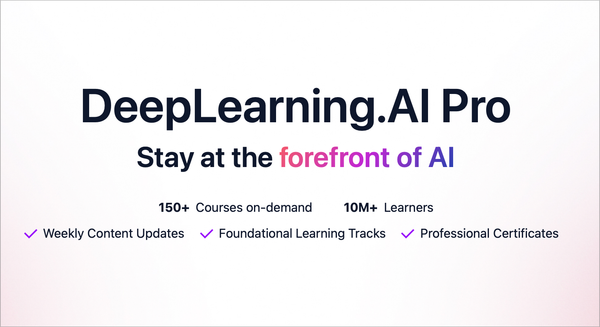Cursor introduces a new model built for agents: Claude models sometimes know they’ve been tampered with
GitHub Copilot’s new agentic tools. OpenAI’s new open classification policy model. IBM’s small but powerful Granite Nano models. The state of generative media. A brand-new way to learn from DeepLearning.AI.

In today’s edition of Data Points, you’ll learn more about:
- GitHub Copilot’s new agentic tools
- OpenAI’s new open classification policy model
- IBM’s small but powerful Granite Nano models
- The state of generative media
- A brand-new way to learn from DeepLearning.AI
But first:
Cursor updates with new coding model and multi-agent interface
Cursor released Composer, its first coding model, plus a redesigned interface for running multiple AI agents simultaneously. Composer completes most coding tasks in under 30 seconds, advertised as 4 times faster than similarly capable models, and includes codebase-wide semantic search for working in large projects. The new Cursor interface centers around agents rather than files, allowing developers to run multiple agents in parallel using git worktrees or remote machines. Cursor 2.0 also introduces improved code review tools and a native browser feature that lets agents test their own work and iterate on changes. Cursor includes free plans with limited features and paid plans starting at $16/month. (Cursor)
Anthropic examines introspective awareness in top models
Anthropic published research showing that Claude models can sometimes detect and identify concepts artificially injected into their neural activity patterns. Using a technique called “concept injection,” interpretability experts inserted specific neural patterns — for example, representations of “all caps” or “bread” — into the model’s activations. They found that Claude Opus 4 and 4.1 correctly recognized these injections about 20 percent of the time, often before mentioning the concept in their output. The models also showed some ability to modulate their internal representations in response to instructions like “think about X” versus “don’t think about X,” and could determine whether outputs were intentional by checking their prior neural activity. While this introspective capability remains highly unreliable and limited in scope, the authors note that the most capable models tested performed best, suggesting introspection may improve as AI systems become more sophisticated. The findings could eventually help make AI systems more transparent by enabling them to explain their reasoning, though the authors caution that models might still fail to notice some internal processes or even learn to misrepresent their thinking. (Anthropic)
Agent HQ integrates multiple agents into GitHub and VS Code
GitHub announced Agent HQ, a platform that brings coding agents from Anthropic, OpenAI, Google, Cognition, and xAI directly into GitHub. The system includes a “mission control” interface across GitHub, VS Code, mobile, and CLI that lets developers assign work to multiple agents and track their progress. New features include Plan Mode in VS Code, which helps developers create step-by-step project plans before writing code, and AGENTS.md files for customizing agent behavior with specific rules and preferences. The new agent capabilities are available for paid Copilot subscribers in GitHub, VS Code, and the Copilot CLI. (GitHub)
OpenAI and ROOST release open-weight safety models
OpenAI launched gpt-oss-safeguard in two sizes (120 billion and 20 billion parameters) as open-weight models under an Apache 2.0 license. The models use chain-of-thought reasoning to classify content according to developer-provided policies at inference time, eliminating the need to retrain classifiers when policies change. OpenAI developed the approach internally as “Safety Reasoner,” which now accounts for up to 16 percent of total compute in some recent launches. The models outperformed GPT-5 Thinking on internal multi-policy accuracy tests despite their smaller size. Both models are available now on Hugging Face. (OpenAI)
IBM’s Granite 4.0 Nano models target the edge
IBM released Granite 4.0 Nano, a collection of four small language models ranging from 350 million to 1.5 billion parameters, designed for edge computing and on-device applications. The models include two with a new hybrid-SSM architecture and two traditional transformer versions, all trained on over 15 trillion tokens and released under an Apache 2.0 license. Benchmarks show the Nano models outperform similarly sized competitors from Alibaba, LiquidAI, and Google on tasks including general knowledge, math, code, safety, instruction following, and tool calling. All four are available on Hugging Face. (Hugging Face)
Survey says Google leads generative media model adoption
An Artificial Analysis survey of 200-plus users and organizations found Google’s Gemini and Veo models led adoption for image and video generation respectively, with 74 percent of respondents using Gemini and 69 percent using Veo. Quality ranked as the top factor in model selection for both personal and organizational use, while cost proved especially critical for organizations choosing video generation APIs; 58 percent cited lower total cost as their primary consideration when selecting access channels. Organizations split nearly evenly between accessing models through applications (65 percent) and APIs (62 percent), while personal users overwhelmingly preferred applications (86 percent). The survey, conducted in Q3 2025 before OpenAI’s Sora 2 release, found 65 percent of organizations reported return on investment within 12 months, with 34 percent already seeing ROI from their generative media initiatives. (Artificial Analysis)
A special offer for our community
DeepLearning.AI just launched the first-ever subscription plan for our entire course catalog! As a Pro Member, you’ll immediately enjoy access to:
- Over 150 AI courses and specializations from Andrew Ng and industry experts
- Labs and quizzes to test your knowledge
- Projects to share with employers
- Certificates to testify to your new skills
- A community to help you advance at the speed of AI
Enroll now to lock in a year of full access for $25 per month paid upfront, or opt for month-to-month payments at just $30 per month. Both payment options begin with a one week free trial. Explore Pro’s benefits and start building today!
Still want to know more about what matters in AI right now?
Read this week’s special Halloween issue of The Batch for in-depth analysis of news and research, including some tricks and treats.
This week, Andrew Ng talked about launching DeepLearning.AI Pro, a new membership offering access to over 150 AI programs, plus exclusive courses and tools to help build AI applications.
“All of DeepLearning.AI’s course videos remain free to view on our platform. Pro membership adds that critical hands-on learning: Labs to build working systems from scratch, practice questions to hone your understanding, and certificates to show others your skills.”
Read Andrew’s full letter here.
Other AI news and research stories we covered that might scare you to your bones:
- Chatbots could lead users into rabbit holes as they intertwine with paranoia and delusions, raising concerns about mental health impacts of AI.
- Experts warn that the AI boom is bound to bust if the massive investments in AI models and infrastructure fail to deliver expected returns.
- The landscape of AI training faces challenges as web data diminishes, with online publishers potentially restricting access to valuable data.
- Autonomous systems wage war with drones reshaping modern combat and sparking fears over the potential loss of human oversight.




